How to clean your precious countertops & tile
Certain cleansers can damage marble surfaces. Such a danger may not even be revealed on the product’s label. Your marble fixtures were too huge of an investment to put at risk. You are determined to show them the best care by prolonging their elegance and luster.
The veining featured within the carbonate stone is nothing short of dazzling. No two cut slabs are alike, each a unique work of art unto itself. It is beloved. Unfortunately it is not free of hassles. Maintaining it properly and keeping it clean is a chief concern, as the porous surface makes it vulnerable to etching and staining. Likelihood of such damage is tripled in the kitchen.
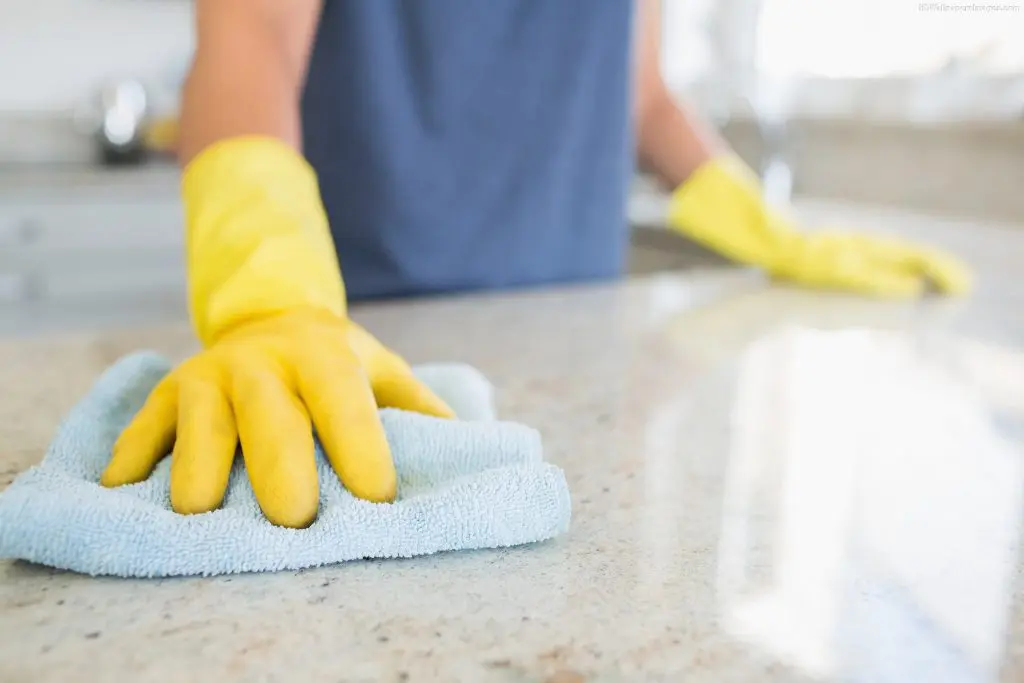
It has been proven, however, that caring for your marble beauties is actually easier than many think. It doesn’t necessarily require special high-end treatments, preserving the stone starts at home. Since anything acidic can etch the surface, you’ll want to be certain of having a rag or sponge handy at all times. Anything can be a potential threat – lemon, tomato and other acidic juices, and of course alcohol – can react and eat away at the stone’s calcium carbonate. As a result, permanent blemishes will emerge in the form of dull, somewhat dark spots or rings. However certain lighting may be able to conceal the newly formed flaws. Even so, it’s best to be preventative.
If deciding whether marble is right for you, and concern over potential damage is an issue, take a drive to restaurants that have and use marble countertops and see how they fare. They are working surfaces that take a beating and experience much heavy use. Give them as intensive an inspection as possible. You may decide to go that route after all.
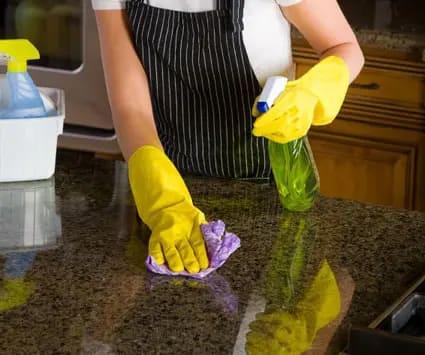
So you know to avoid anything of the acidic variety. Well, the same rule applies to cleaning supplies as well. Cleaners that contain vinegar, lemon juice, anything even potentially acidic (including bleach) is discouraged. Luckily, the solution you CAN use couldn’t be easier – mild soap and water. There’s almost nothing that soap and water can’t remove from a countertop. Using it to wipe down surfaces with a soft sponge or cloth is the best way to clean the polished marble. Even so, it will not serve to remove the etching or stains if they have had ample time to corrode the surface.
Since the surfaces are polished, the finish is a glossy one that reflects light dramatically as well as it does accentuate the marble patterns. On the other hand, a honed surface is a bit smoother – almost satiny, though not quite matte. It is common for floors, stairs and other well-traveled areas.
The fact is, a honed marble piece is already etched when it is purchased. If you happen to scrape it with a knife you likely won’t notice any damage. However, it is prone to staining as a honed surface is quite porous. Consumers are left to decide whether this or the fact that polished marble will barely stain or etch more is the lesser of the evils.
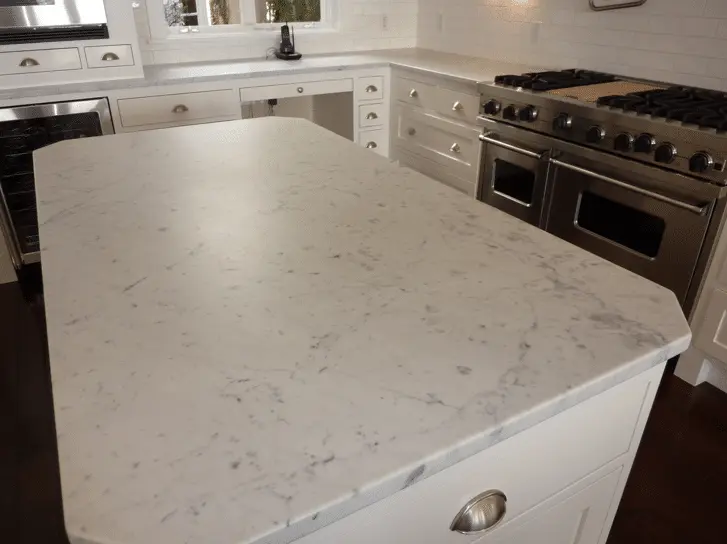
Naturally, an island in a marbled kitchen probably has a marbled countertop as well. It’s also the most likely place for etching to be revealed, as the countertop is typically just below the center of the light source and there’s no attached backsplash to diffuse the shine.
When a marble countertop is purchased, the consumer is encouraged to have the product sealed, possibly as often as twice a month. This is done by applying a spray sealant that protects the surface so it will not be easily penetrated. It provides a barrier, allowing time to treat potential stains from worst offenders such as red wine. Sure, red wine is all fun and games until someone spills it…
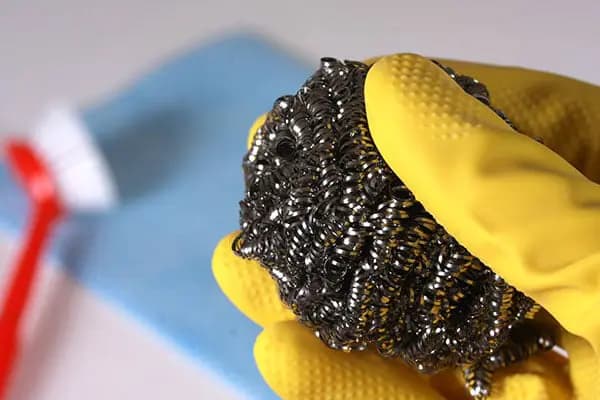
Other culprits behind the worst stains include those of the oil-based variety such as grease and cooking oil. But there’s a natural way to potentially remove them. Clean gently with a soft liquid cleanser, regular detergent or ammonia. Stains caused by coffee and tea or foods (such as fruit) should be treated with a mixture of twelve-percent hydrogen peroxide and a few drops of ammonia. Metal causes rust stains that need to be carefully removed with a poultice and are difficult to absolve. Paint stains, on the other hand, can be dissolved with lacquer thinner or even scraped off (be careful!). Water spots and rings are quite common and you’ll need to be cautious when removing them by buffing the surface with dry #0000 steel wool.
For the super-stubborn stains apply a paste-like cleaning agent. ‘Just add water’ poultices are available from stone maintenance companies. Mix to the consistency of peanut butter and spread it on the surface. Let it sit for up to two days, covered with plastic wrap (edges taped down). Then, remove the wrap and let dry. Proceed to separate the hardened mixture, carefully with a scraper if necessary, it should pull the stain from the stone. Finally, rinse and buff dry with a soft cloth.
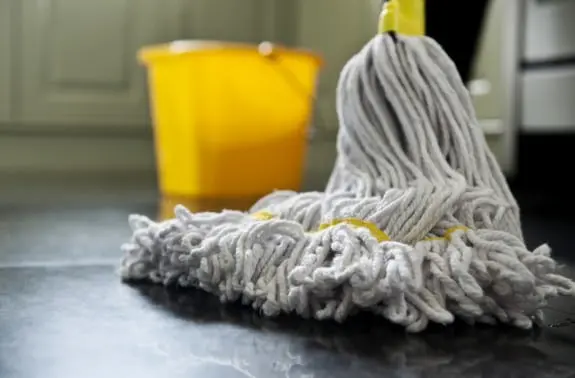
Marble floors meanwhile are a different beast. Dust-mop them often, and clean with a mild phosphate-free liquid dishwashing soap or powder. NOTE: soapless cleaners streak less and leave less film.
After washing, rinse and dry. As with the countertops, don’t use cleaners that are acidic. In this case, we’re looking at ones such as grout, tub and tile cleaners. Don’t run a vacuum over it either, especially if it’s a heavy old clunky one – the wheels will scratch the floor!
It seems fitting that marble isn’t just a dazzling addition to our home – it’s a responsibility. And like anything else that is great, we have to work to preserve it.






